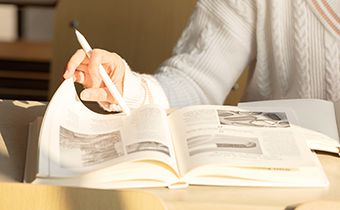老师职责的一部分是要弄自己的教案课件,到写教案课件的时候了。我们要写好教案课件计划,新的工作才会如鱼得水!有多少经典范文是适合教案课件呢?小编特地为大家精心收集和整理了“九年级英语上Unit5LookintoScienceLesson27PlanetDanny教案”,但愿对您的学习工作带来帮助。
Unit5LookintoScience
Lesson27PlantDanny
◆
1.AnalysisoftheStudents
ThestudentsofGrade9havemasteredcertainvocabularies,expressionsandstructures.Theyalsohavetheabilitiesofself-teachingandworkingingroups.MostofthemarewillingtoexpresstheiropinionsinEnglish.
2.AnalysisofTeachingContent
◆教学目标Lesson27isthethirdlessoninUnit5,Book5.ThisunitfocusonthesubjectLookintoscience,alsoteachthestudentssomethingaboutscience.Studentscaresaboutthesubjectbecauseitisclosetoeveryone.Lesson27mainlytalksaboutlearntodoanotherexperiment.
1.Tomasterthewords:solar,telescope,certainly,unless,double,mystery,belongto,lookthrough.
2.Tomastertheexpressions:solarsystem,atnight,evenif,lookthrough,comeout,
beworth+n.beworth+v-ing.
Improvethestudents’abilityofspeaking,listening,readingandwriting.Knowmoreabouttheforeignoccupation.
Knowmoreabouttheforeignoccupation,Keepontrying,andyouwillsucceed.
1.Knowmoreabouttheastronomer.
2.Tomastertheadverbialclauses.
Tolearntheastronomersoccupation.
◆课前准备
◆
Taperecorder,Multimedia
◆教学过程
Step1.Warm-up
Freetalk:
Thinkaboutit!
1.Doyoulikescience?Whyorwhynot?
2.Doyouknowanyoftheplanetsinthesolarsystem?
Step2.Presentation
1.Explainthewordplanetandthewordsolar.
2.Elicitthewordtelescope:Howtoseethesolarsystem?
3.Showthepictureoftelescopeandexplainit.
4.Showthepictureofthetextandaskstudents:Whatdotheydo?Whatdotheysee?
5.Question:Whatdoesthesolarsysteminclude?
6.Explainthequestion:Theearth,thesunandthemoonallbelongtothesolarsystem.OursolarsystemisinagalaxycalledtheMilkyWay.Scientistsaytheuniversecontainsbillionsofgalaxies.
7.Explainthenewwords.
8.Listentothedialogueandtickthecorrectanswers.
(1)WhatdidDannydolastnight?
Hetriedtostudythemoon.
Hetriedtofindanewplanet.
(2)WhatdidDannyuse?
Atelescope.
Abook.
(3)WhatdidDannyneed?
Moresleep.
Morestars.
9.Checktheanswers.
10.Languagepoints:
arrive意为“到达,来到”,为不及物动词,后接表地点的名词时,需使用介词in或at。in用于指较大的地点,at则指比较具体的小地点。arriveat/in=getto/reach
定语从句:含有that引导的宾语从句。无论主句是陈述句还是疑问句,宾语从句都应使用陈述语序。含宾语从句的复合句,主从句谓语动词的时态呼应包括以下三点:
(1)如果主句的谓语动词是一般现在时,宾语从句的谓语动词可根据需要,选用相应的时态。
(2)如果主句的谓语动词是一般过去时,宾语从句的谓语动词应用相应的过去时态。
(3)如果宾语从句所表示的是客观事实、普遍真理、自然现象或习惯性动作等,不管主句用什么时态,从句时态都用一般现在时。
Theusageofthrough,acrossandover
though:表示“穿过、通过”,指从某处或某物中间通过,侧重点是从某空间里面通过。
across:表示“横过、穿过”,指在某一平面或物体上从一边到另一边去。
over:表示“越过”,指从某物的上方越过。
unless:“除非,如果不”。
unless引导的条件状语从句常用一般现在时表示将来的意义,主句多用一般将来时。
例句:Youwillfailunlessyoustudyhard.
如果你不努力学习,就会失败。
double
作名词或形容词,意为“两倍(的);双重(的)”,
也可作动词,意为“使加倍”
worth:“相当……价值,值得”,
用于beworth+n./doing结构。
evenif:“即使……”,用来引导让步状语从句。
belongtosb.意为“属于某人”,
=besb’s
belongto不能用于进行时态和被动语态。
billionsof:“数十亿计的”
Step3.Practice
1.Listenandfollowtothetape.
2.Readthelessonandwritetrueorfalse.
()(1).Dannyisstudyingthesolarsystematschool.
()(2).DannyislookingthroughthetelescopewhenJennyandBriancometovisit.
()(3).Duringtheday,Dannycanseemanystarsintheskythroughthetelescope.
()(4).JennyandBrianwillcomebacktoDanny’shousebecausetheywanttousethetelescope.
()(5).Dannyhasdiscoveredanewplanet.
3.Readthelessonandfillintheblanks.
OnSaturdayafternoon,BrianandJennyvisitedDannyathishouse.Whentheyarrived,Dannywasoutsidelooking_________atelescope.BrianandJennylaughedatDannybecausehewasusingthewrong________ofthetelescope.Ofcourse,Dannycouldn’tseethe_______duringtheday.BrianandJennyalsowantedtojoinDanny.Theydecidedtocomebackaftersupper.Afterthesunwentdown,theycouldseethestars.Dannyhopedto__________anewplanet.
4.Groupwork:
(1)Practicethedialogueingroups
(2)Actitout.
Step4.Consolidation
1.Groupwork:Whatinterestsyouaboutthesolarsystem?Ifyouhadachancetogotospace,wouldyougo?Shareyourideaswithapartner.
2.Enjoysomepicturesinoutspace.
3.Makeanewdialoguewithyourpartner.
4.Enjoyavideo.
Step5Homework
1.Listenandread.
2.Finishexercisesofthislesson.
延伸阅读
九年级英语上Unit5LookintoScienceLesson29DNA_TheStoryofYou教案
Unit5LookintoScience
Lesson29DNA-TheStoryofYou
◆
1.AnalysisoftheStudents
ThestudentsofGrade9havemasteredcertainvocabularies,expressionsandstructures.Theyalsohavetheabilitiesofself-teachingandworkingingroups.MostofthemarewillingtoexpresstheiropinionsinEnglish.
2.AnalysisofTeachingContent
Lesson28isthefifthlessoninUnit5,Book5.ThisunitfocusonthesubjectLookintoscience,alsoteachthestudentssomethingaboutscience.Studentscaresaboutthesubjectbecauseitisclosetoeveryone.Lesson28mainlytalksaboutDNA,ittellusthecharacterandfunctionofDNA,alsounderstandourbody.Weareuniqueintheworld.
◆教学目标
1.Tomasterthewords:blueprint,general,complex,twins,pattern,identify,berelatedto,exceptfor.
2.Tomasterthephrases:notonly…butalso,exceptfor,berelatedto,billionsof.
Improvethestudents’abilityofspeaking,listening,readingandwriting.UnderstandthearticlesaboutDNA.
Knowmoreaboutthenature,knowmoreaboutourbody.Youareuniqueintheworld.
Tomasterthecompoundsentences.
TomastertheuseofDNA.
◆课前准备
◆
Taperecorder,Multimedia
◆教学过程
Step1.Warm-up
Freetalk:(showthepictureofDNA,tellstudentsDNAisshortfordeoxyribonucleicacid.)
Thinkaboutit!
1.WhatdoyouknowaboutDNA?
2.WhatcanscientistsdowithDNA?
Step2.Presentation
1.Freetalk:
(1)Whereisitinourbody?(ShowsomepicturesofDNA.)
(2)WhatsthefunctionofDNA?(Showsomepicturesoftwins.)
2.Explainthenewwords.
3.Readthelessonandanswerthequestions:
(1)Whatisablueprint?
(2)Whichismorecomplex,buildingalivingthingorbuildingahouse?
(3)DosometwinshavethesameDNA?
(4)IsitpossibletochangeyourDNA?
(5)WhoseDNAisrelatedtoyours?
4.Checktheanswersandunderlinethekeywords.
5.Listenandfollowtothetape.
6.Explainthelanguagepoints:
between与among
between用于两者之间,among一般指三者或三者以上。
JacksitsbetweenTimandBob.
Jack坐在Tim和Bob之间。
Shewasamongthecrowd.
她处在人群中。
use…todosth.用……做某事
Sheisusingaknifetocutvegetables.
她正用小刀切蔬菜。
use的形容词是useful.
Isthefridgeveryuseful?
这台冰箱很有用吗?
too与either
too与either都表示“也”,其区别是too用于肯定句,表示“也”;either用于否定句,表示“也不”。他们通常都位于句末,其前用逗号隔开。
Hehasababybrother,too.
他也有个小弟弟。
Hedoesn’thaveaneraser,either.
他也没有橡皮。
own的用法adj.自己的(用在所有格后面,加强语气)
Hemakesallhisownnotebooks.
她所有的衣服都是自己做的。
vt.有;拥有
Whoownsthecar?
这辆汽车是谁的?
ownern.所有人;物主
Sheistheownerofthehouse.
她是这座房子的主人。
exceptfor除……以外,只是
Davidisagoodmanexceptforhottemper.
大卫除了脾气暴躁以外,他是个好人。
Theclassroomisniceexceptfordirtyonthefloor.
教室除了地板脏以外都很好。
Step3.Practice
1.Readthelessonbythemselves.
2.Fillintheblankswiththephrasesintheboxonpage75.
ingeneral,exceptfor,notonly…butalso,
relatedto,evenif,thesame…as…
(1)Yourhomeworkisquitegood__________afewspellingmistakes.
(2)_________theyoung_________theoldlikepopmusic.
(3)Kate’shairis_____________colour_________hersister’s.
(4)________________,womenlivelongerthanmen.
(5)_____________manydifficultiesremain,wecanovercomethem.
(6)Iswealth______________happiness?
3.Checktheanswers.
4.Askstudents:DoyouthinkDNAcanchangeeachother?ReadagainandCompletethepassagewiththesentencesinthebox.
ChangingDNA
DoyouknowDNAcanbechanged?Haveyoueverseenapigwithadog’sbody?Ofcoursenot!Pigsanddogscan’thavebabiestogether._________Butnow,scientistscandoit.ScientistscantakeDNAfromonekindofanimalandputitintoanotherkindofanimal.TheycandesignnewplantsbycombiningtheDNAofotherplants. _____________Somescientistsareworried.TheysayweneedtoknowmoreaboutDNAbeforewestartchangingit.________Butwhatiftheplantsarebadforhumans,too?
A.TheirDNAcan’tcombine.
B.Wecanmakeplantsthatarebadforpests.
C.TheycanevencombinetheDNAofaplantandananimal.
5.Checktheanswers.
Step4.Consolidation
Groupwork:
IsitagoodideatochangetheDNAofthefoodweeat?
Somepeoplesaydoingthismakesourfoodbetter.Othersthinkit’stoodangerous.
1.Discusstheideaofyours.
2.Writedownyourideas.
3.Reportyouideas.
Step5Homework
1.Listenandread.
2.Finishexercisesofthislesson.
九年级英语上册Unit5LookintoScienceLesson26KeeptheCandleBurning教案
Unit5LookintoScience
Lesson26KeeptheCandleBurning
◆
1.AnalysisoftheStudents
ThestudentsofGrade9havemasteredcertainvocabularies,expressionsandstructures.Theyalsohavetheabilitiesofself-teachingandworkingingroups.MostofthemarewillingtoexpresstheiropinionsinEnglish.
2.AnalysisofTeachingContent
Lesson26isthesecondlessoninUnit5,Book5.ThisunitfocusonthesubjectLookintoscience,alsoteachthestudentssomethingaboutscience.Studentscaresaboutthesubjectbecauseitisclosetoeveryone.Lesson26mainlytalksaboutlearntodoanotherexperiment.
◆教学目标
1.Tomasterthewords:match,light,burn,useup,candleholder,shallow,oxygen,one-fifth.
2.Tomastertheexpressions:doanexperiment,fill…with,cover…with,turn…upsidedown,be(not)sure…
Improvethestudents’abilityofspeaking,listening,readingandwriting.Doandexpresstheexperiment.
Studentscanenjoythepleasureofliterature.
Theusageofprefer.
Writeacompositiontodescribeaninterestingexperiment.
◆课前准备
◆
Taperecorder,Multimedia
◆教学过程
Step1.Warm-up
Freetalk:
Thinkaboutit!
1.Doyouthinkscienceisinteresting?Whyorwhynot?
2.NameoneortwofamousChinesescientists.Whatdoyouknowaboutthem?
Step2.Presentation
1.Doanexperiment.
2.Showthepictureandtellstudentstheexperiment:KeeptheCandleBurning.
3.Introducesomethingweneedintheexperiment,meanwhilelearnthenewwords.
4.Guess:Whatdowedotheexperiment?
5.Readthetextandfillintheblanksonpage69.
Let’sdotheexperimenttogether!Putthecandleinthecandleholder.Putthecandleholderonthedish.Fillthedishhalffullwithwater.Lightthecandlewitha_______oralighter.Whatcanyousee?Thecandleisburning.________thecandleburnfortwoorthreeminutes.Thencarefullyputthejaroverituntilthetopofthejarrestsonthedish.Asthecandleburns,it_______theoxygenintheair.Whenthecandlestops________,ithasusedupalltheoxygenintheair.Thewaterinsidethejar_______andfillsabout________ofthejar.Thisisbecauseaboutonefifthoftheairismadeupofoxygen.
6.Checktheanswers.
7.Guess:Whatishappening?Listentothetapeandanswerthequestion.
8.Listenandfollowtothetape.
9.Explaintheexpressionoffractions:
(1)分数由分子和分母两部分构成。用英语表达时,分子用基数词,分母用序数词。
(2)如果分子为1,则分母的序数词是单数形式,如果分子大于1,则分母的序数词用复数形式。
=one(a)half或onesecond(one-second)
=one(a)quarter或one-quarter
Step3.Practice
1.Practicethetextingroups.
2.Finishtheexerciseonpage69.
3.Retelltheexperiment.
Step4.Consolidation
1.Groupwork:(Teacherasksstudentspreparesomethingtheyneedinexperimentsingroups.)
Dotheexperimentingroups.
Readabouttheexperimentinthislesson.Withagroupofclassmates,practicetheexperiment.Doyourexperimentinfrontoftheclass.Don’tforgetthefollowingthings:
(1)First,describeyourexperiment.
(2)Second,asktheclasswhattheythinkwillhappen.
(3)Third,dotheexperiment.
(4)Finally,asktheclassiftheresultiswhattheyexpected.
2.Showtheexperiments.
3.Getaresult.
4.Writedowntheprogressintheexperiment.
Step5Homework
1.Listenandread.
2.Finishexercisesofthislesson.
九年级英语上册Unit5LookintoScienceLesson25Let’sDoanExperiment教案新版冀教版
做好教案课件是老师上好课的前提,是时候写教案课件了。我们制定教案课件工作计划,才能更好地安排接下来的工作!有没有好的范文是适合教案课件?下面是由小编为大家整理的“九年级英语上册Unit5LookintoScienceLesson25Let’sDoanExperiment教案新版冀教版”,欢迎您参考,希望对您有所助益!
Unit5LookintoScience
Lesson25Let’sDoanExperiment
◆
1.AnalysisoftheStudents
ThestudentsofGrade9havemasteredcertainvocabularies,expressionsandstructures.Theyalsohavetheabilitiesofself-teachingandworkingingroups.MostofthemarewillingtoexpresstheiropinionsinEnglish.
2.AnalysisofTeachingContent
◆教学目标Lesson25isthefirstlessoninUnit5,Book5.ThisunitfocusonthesubjectLookintoScience,alsoteachthestudentssomethingaboutscience.Studentscaresaboutthesubjectbecauseitisclosetoeveryone.Lesson25mainlytalksabouttheprogressoftheexperiment,aswellasteachthestudentshowtodotheexperiments.
1.Tomasterthewords:science,experiment,fill,prove,scientific,method.
2.Tomastertheexpressions:doanexperiment,fill…with,cover…with,turn…upsidedown,be(not)sure…
Improvethestudents’abilityofspeaking,listening,readingandwriting.Doandexpresstheexperiment.
Studentscanenjoythepleasureofliterature.
Theusageofprefer.
Teachstudentslovescience.
◆课前准备
◆
Taperecorder,Multimedia
◆教学过程
Step1.Warm-up
Freetalk:
(1)Doyoulikescience?
(2)Whatkindsofexperimentshaveyoudoneinscienceclass?
(3)Ifyouholdajarthatisfilledwithwaterupsidedown,whatwillhappen?
Step2.Presentation
1.Explain“upsidedown”.
Teachershowthepictureaboutupsidedown.
2.Explainthenewwordswiththepictures.
3.Listentothetapeandanswerthequestions:
(1)WhatwillBraindo?
(2)WhydoesDannysaytheyshoulddothisexperimentoutside?
4.Checktheanswers.
5.Languagepoints.
Ithink…:“我认为……”,其后可接that引导的宾语从句。在使用时要注意,否定主句,反问从句。
getwet意为“变湿”。后接形容词作表语。
pourout:“倒出,使流出,涌出”。 pour…into…:“把……倒进……”。
besureof:“确信;对……有把握”
puton:“穿上”,为“动词+副词”构成的短语。
“Itis+形容词+enoughtodosth.”“做某事是足够……的”。
=too…to…
=so…that…。
concludefrom意为“从……推断,从……中得出”。
find,findout,discover,invent
(1)find意为“找到,发现”,强调“找”的结果,也可指偶然发现、碰到,其后可接名词、复合结构或that从句。
(2)findout指“弄清楚,查明”。着重表示通过调查、分析、思考等得出结果。
(3)discover意为“发现”,指发现已存在但不为人所知的事物。
(4)invent意为“发明”,指发明原来不存在的东西。
Step3.Practice
1.Listenandfollowtothetape.
2.Readthedialoguewiththefollowingquestions.
(1)WhydoesDannysaytheyshoulddothisexperimentoutside?
(2)WhatwillBriando?
(3)DoesDannyhavethesametheoryasBrian’s?
3.Checktheanswers.
4.Readthelessonandanswerthequestions.
(1)WheredoesDannythinktheyshoulddotheexperiment?
(2)Whatkeepsthewaterinthejar?
(3)IsJennysureofhertheory?Howdoyouknow?
(4)WhydoesDannyputonhisraincoat?
(5)WhatdoesDannyconclude?
5.Checktheanswers.
6.Readtheexperiment.Putthesentenceinthecorrectorderonpage67.
7.Checktheanswers.
Step4.Consolidation
1.Groupwork:Trytodotheexperimentinthislessonyourself.
Whathappenswhenyouuselesswater,morewater,wetcardboard,ordifferentkindsandsizesofjars?
2.Reportyourexperimentandretelltheprocess.
3.Summarytheexperiment.Howtodoanexperiment.
4.Listenandsingasong,Whatisscience.
Step5Homework
1.Listenandread.
2.Finishexercisesofthislesson.
文章来源:http://m.jab88.com/j/85385.html
更多猜你喜欢
更多-
 九年级英语上Unit5LookintoScienceLesson29DNA_TheStoryofYou教案 Unit5LookintoScienceLesson29DNA-TheStoryofYou◆ 1.AnalysisoftheStudentsThestudentsofGrade9havemaster...
九年级英语上Unit5LookintoScienceLesson29DNA_TheStoryofYou教案 Unit5LookintoScienceLesson29DNA-TheStoryofYou◆ 1.AnalysisoftheStudentsThestudentsofGrade9havemaster... - 九年级英语上册Unit5LookintoScienceLesson26KeeptheCandleBurning教案 Unit5LookintoScienceLesson26KeeptheCandleBurning◆ 1.AnalysisoftheStudentsThestudentsofGrade9havemas... 小学五年级英语教案 04-26
- 九年级英语上册Unit5LookintoScienceLesson25Let’sDoanExperiment教案新版冀教版 Unit5LookintoScienceLesson25Let’sDoanExperiment◆ 1.AnalysisoftheStudentsThestudentsofGrade9havemast... 闽教版小学英语教案 04-26
- 新起点英语一上: Unit 5 Numbers 3 Lesson 27~28教案 一、教学目的: 1.能够听懂录音,并能用英语数数1-10。 2.能跟着录音唱歌并做动作或进行表演。 3.能够用手势表示数字1-10。 4.能够用英语说出10以内的加法算式。 5.能听懂Letsmake... 高中必修一英语教案 06-11
最新更新
更多-
 2019中考英语复习资料:句子的成分 2019中考英语复习资料:句子的成分 句子的成分 1.定义:组成句子的各个部分叫做句子的成分,即:主语、谓语、表语、宾语、宾语补足语、定语和状语。主语和谓语是句子的主体部分。表语、宾语、宾语补足语...
2019中考英语复习资料:句子的成分 2019中考英语复习资料:句子的成分 句子的成分 1.定义:组成句子的各个部分叫做句子的成分,即:主语、谓语、表语、宾语、宾语补足语、定语和状语。主语和谓语是句子的主体部分。表语、宾语、宾语补足语... - 九年级英语教学案例Howdoyoustudyforatest? 九年级英语教学案例Howdoyoustudyforatest? TeachingMaterial 本课新目标英语《goforit》九年级unit1setionA为依据。 AnalysisoftheMa... 小学五年级英语教案 04-26
- 2018初中英语重要短语汇总一 2018初中英语重要短语汇总一 1.agreewith同意...的意见(想法) Icantagreewithyouaboutthat. 就那件事,我无法同意你的看法。 2.1istent... 牛津高中英语模块一教案 04-26
- 五年级语文上册期末总复习资料汇总(一)人教版 五年级语文上册期末总复习资料汇总(一)人教版 1、《窃读记》 作者:林海音《城南旧事》就是她的作品 重点句: ①急忙打开书,一页,两页,我像一匹饿狼,贪婪地读着。 “贪婪”是指贪得无厌,没有满足的时候... 小学语文五年级教案 04-26
- 初三英语Unit 4 He said I was hard –working导学案 初三英语Unit4HesaidIwashardworking导学案 SectionA 一、学习目标: 1)Importantwords:mad,anymore,message,suppose,hard... 小学三年英语教案 04-26
- 九年级英语上册Unit5LookintoScienceLesson26KeeptheCandleBurning教案 Unit5LookintoScienceLesson26KeeptheCandleBurning◆ 1.AnalysisoftheStudentsThestudentsofGrade9havemas... 小学五年级英语教案 04-26
- 九年级英语教案 Unit 5 It must belong to Carl 九年级英语教案Unit5ItmustbelongtoCarl 第一课时SectionA I.认真预习课本P34-35,完成以下任务。 (一)默写下列单词、词组。 1.属于2.作家、作者3.可能的4.谁... 小学五年级英语教案 04-26
- 五年级语文上册总复习知识点汇总(第七、八单元) 五年级语文上册总复习知识点汇总(第七、八单元) 1. 听写五六单元的生字词语。 2.形近字: 溶(溶解) 没(出没) 审(审问) 街(街道) 泄(排泄) 剂(剂量) 熔(熔化) 疫(防疫) 伸(伸展)... 小学语文五年级教案 04-26
- 九年级上学期M8U1教案 九年级上学期M8U1教案 题 Module8Unit1 课型 Listeningandspeaking 教学目标 1.Vocabulary beat,memory,decision,excuse,ch... 小学五年级教案 04-26
